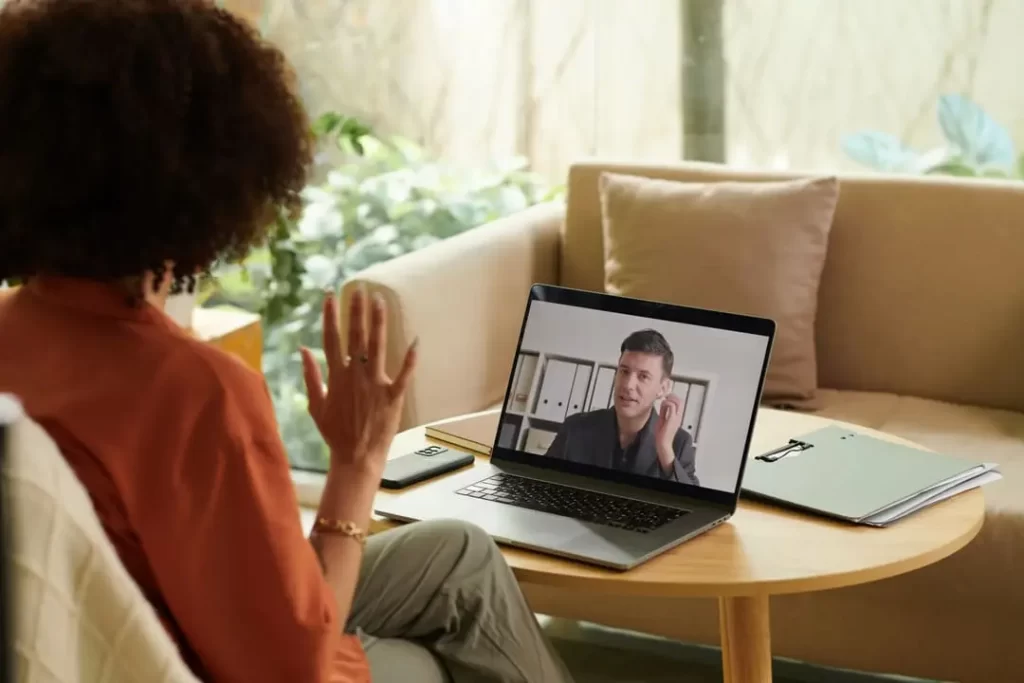Successful entrepreneurs understand that good business greetings in Latin America is about building strong relationships and conducting business in a respectful and efficient manner.
By establishing partnerships with suppliers, competitors, or creating new connections, you can build a stronger and more enduring relationship – and this is essential when planning to do business in other countries. By expanding your scope abroad, you open your company up to new influences, new customers, and can create many opportunities.
Of course, there are countless aspects to consider – and being aligned with cultural differences can give you a significant strategic advantage. By recognizing differences in business etiquette and understanding the culture you are engaging with, you can forge stronger connections with your future business partners.
Additionally, knowing the local culture beforehand can help you avoid embarrassing situations and disagreements that could create unpleasant circumstances.
Let’s understand now and study this fabulous culture that is Latin America.
Europartner has prepared this article full of useful information for you and your business.
Let’s discuss the topics below.
Punctuality in Latin America
Among business greetings topics, punctuality in Latin America is a fascinating one, as it varies significantly across different countries in the region. While some countries value punctuality as much as European countries do, in others, the concept of time is more flexible.
The Brazilian case:
Brazil, in general, has a more relaxed culture when it comes to punctuality. In professional settings, for example, punctuality is increasingly valued, especially in large companies and sectors like finance.
However, in social events, it’s common for schedules to be more flexible. Arriving up to one hour late is not a problem. Sometimes this is due to heavy traffic in big cities, but often it’s simply a cultural matter. It’s widely accepted that meetings may start a bit later than scheduled due to the region’s relaxed pace.
Latin America:
Latin American culture is extremely diverse, and the concept of time varies greatly from country to country.
Countries with cultures closer to Brazil, such as Argentina, Uruguay, and Chile, tend to have a more relaxed culture regarding punctuality, similar to Brazil.
Countries with cultures closer to Europe, such as Mexico and Colombia, tend to value punctuality more, especially in professional settings.
As a foreign businessperson, it’s advisable to be punctual to make a positive impression and arrive on time for meetings. Flexibility and understanding if other people are late are also appreciated.
Virtual Meetings
Virtual meetings are also a part of the current business greetings world. It tends to favor American and European punctuality standards.
It’s advisable to communicate your expectations regarding a punctual start in advance.
Greetings in Latin America
Business greetings in Latin America, especially in Brazil, are characterized by a warmth and expressiveness that can surprise foreigners. For a businessperson preparing to do business in the region, understanding the nuances of greetings is essential to build strong relationships and make a good impression.
Handshake:
The handshake is the most common way to greet someone, both in professional and social settings. It should be firm but not too strong, and accompanied by a smile. Maintaining eye contact during a handshake demonstrates interest and respect.
Kiss on the cheek:
In many Latin American countries, a kiss on the cheek is a common way to greet friends and family. In Brazil, the number of kisses can vary from one to two, depending on the region. In professional settings, the kiss on the cheek may be more reserved, occurring only between people who already know each other well.
If you are arriving to do business, you don’t need to worry about this type of greeting. A handshake is sufficient.
Hug:
A hug is a way to show affection and closeness, especially among friends. In more formal situations, a hug may be more reserved and reserved for close people.
Importance of titles:
Mr./Mrs./Dr.: The use of titles such as “Mr.”, “Mrs.”, “Doctor” is common in professional settings. First name: Among friends and coworkers, the use of the first name is more common.
Verbal expressions:
“Good morning”, “Good afternoon”, “Good night”: These are the most common greetings at any time of day.
“How are you?”, “How is it going?”: These questions are asked as a form of greeting and show interest in the other person.
Useful tips:
Smile: A sincere smile conveys sympathy and openness.
Be patient: Communication can be slower and involve more conversation than in other cultures. Adapt: Observe the behavior of people around you and adapt your way of greeting.
Read also: Brazil tax reform: the complete guide
Exchanging Business Cards in Latin America
Exchanging business cards is an important ritual in Latin business greetings culture. In addition to listing your name, position, and contact information, each card should have a translation in Spanish/Portuguese on one side and the same information in your native language on the other.
Cards are usually exchanged at the beginning of business meetings, and you should give your card to your colleague with the Spanish/Portuguese side facing up.
Despite the rise of digital cards, physical cards still play an important role in some situations:
- In-person events: At fairs, conferences, and other events, a physical card can be more tangible and memorable.
- More formal relationships: In some sectors and cultures, the physical card is still seen as a symbol of professionalism and tradition.
- More conservative clients: Some people still prefer to receive a physical card as a form of initial contact.
How to choose the best option?
The choice between a physical and digital card depends on several factors, such as:
- Target audience: Analyze the profile of your customers and business partners.
- Industry: Some industries tend to be more traditional and value the physical card.
It is very important to remember that in Latin America the common language is Spanish.
Brazil is the only country which speaks Portuguese, not Spanish. Trying to speak Spanish while in Brazil is not advisable.
Business Attire in South America
Professional attire in Brazil and Latin America, while becoming increasingly casual in some settings, still maintains a certain level of formality, especially in large companies and important meetings.
Useful tips on business attire in the region:
Formality:
For men, a suit (usually dark), dress shirt, tie, and dress shoes are the norm in more formal settings. In more relaxed environments, a blazer and dress pants may suffice.
Women can opt for skirts or dresses below the knee, dress pants, blouses, and blazers are common options. Avoid deep necklines and very tight clothing.
Colors:
Black, gray, navy blue, and white are the most common and versatile colors.
In some Latin American countries, such as Brazil, the use of more vibrant colors may be more common, especially in more creative environments.
Fabrics:
- Natural fabrics: Cotton, linen, and wool are the most commonly used, as they provide comfort and elegance.
What are the cultural differences that should be considered?
- Climate: In hot countries like Brazil, clothing tends to be lighter and cooler. It is common to see people wearing cotton and linen clothes.
- Industry: In more creative sectors, such as technology, clothing can be more casual.
- Regionalism: Dress codes can vary from region to region within the same country.
Read also: how to register a company in Brazil?
Business Meeting Etiquette in Latin America
Let’s take a look at a simplified step-by-step guide to help you visualize a business meeting taking place in Latin America.
Scheduling and Arrival
- Meetings should be scheduled in advance.
- Arrive on time and be prepared in appropriate business attire.
- Be prepared to wait for your colleagues to arrive and for the meeting to start a little late.
Greetings and Seating
- Greet everyone with handshakes, smiles, and eye contact.
- Exchange business cards.
- Follow your host’s instructions for seating.
- Begin the meeting with some informal conversation.
Discussion and Negotiation
- Expect negotiations and discussions to take some time, as Latin Americans prefer to take the time they need to make a decision.
- Just as with the relaxed attitude towards punctuality, adherence to meeting times is not strictly observed and the topic may sometimes deviate.
- Be attentive and patient.
- Maintain eye contact with the person who is speaking, as breaking eye contact when speaking to someone in Brazil is considered rude.
- Don’t worry if you are interrupted; it’s not considered rude to do so here.
- Brazilians tend to get very excited when speaking, speaking louder and gesturing. While this may seem intimidating, it’s perfectly normal and shows that they are engaged in the conversation.
Conclusion and Follow-up
- Following a meeting with a meal or drink is a great way to strengthen personal connections.
- Send follow-ups to the appropriate people.
Non-verbal communication in business greetings
Non-verbal communication plays a very important role in Latin American business interactions. Body language and gestures can convey messages, build rapport, and even influence the outcome of negotiations. Here are some key points to consider:
Gestures are widely used in Latin American communication. While some gestures are universal, others can have different meanings in different cultures. For example, the “OK” sign (thumb and index finger forming a circle) can be considered offensive in some countries, while in Brazil it is widely used.
Eye contact: Maintaining eye contact is essential. It demonstrates attentiveness, sincerity, and respect. However, prolonged or intense eye contact can be perceived as aggressive.
Personal Space: Latin American cultures tend to be more tactile than some others. Physical contact, such as a pat on the shoulder or a light touch on the arm, is common among friends and colleagues. However, it’s crucial to be mindful of personal space and avoid any gestures that might make the other person feel uncomfortable.
Dinner etiquette in Latin America
Business dinners in Latin America tend to be informal, with fewer discussions about work and more personal conversations to allow people to get to know each other better.
It’s common to hear personal questions about family or hobbies. Talking about popular sports is another way to start a conversation. If there are plans to discuss business matters, expect your colleagues to bring up the topic first.
Business meals usually last several hours, with a relaxed dining etiquette.
Useful Cultural Tips
- Wait for the host to start the meal and make a toast before starting to eat.
- Wait for everyone to have their food before starting to eat.
- Eat everything with utensils, even pizza.
- Make sure your hands are visible on the table and don’t rest your elbows on the table.
Planning to invest in Latin America? This is your starting point
If your company wants to invest in Latin America, it is advisable to count on a specialized consultancy that can help with the necessary procedures.
Europartner can be your ideal partner, as in addition to having more than 15 years of market experience, it has a multidisciplinary and multicultural team that knows the particularities of Latin culture and can help you with all the cultural, bureaucratic, legal, and tax details.





